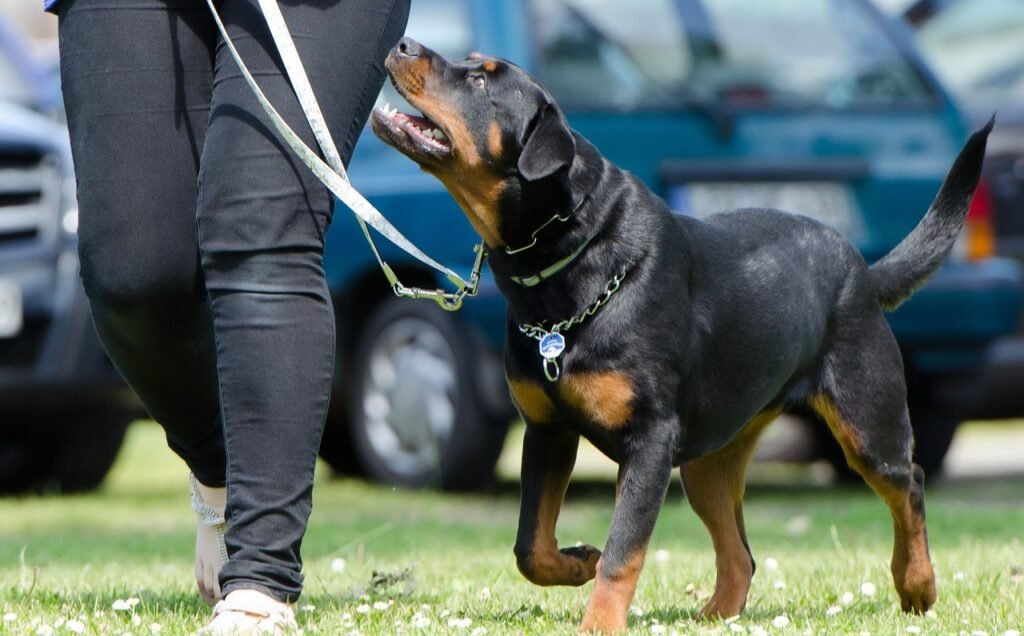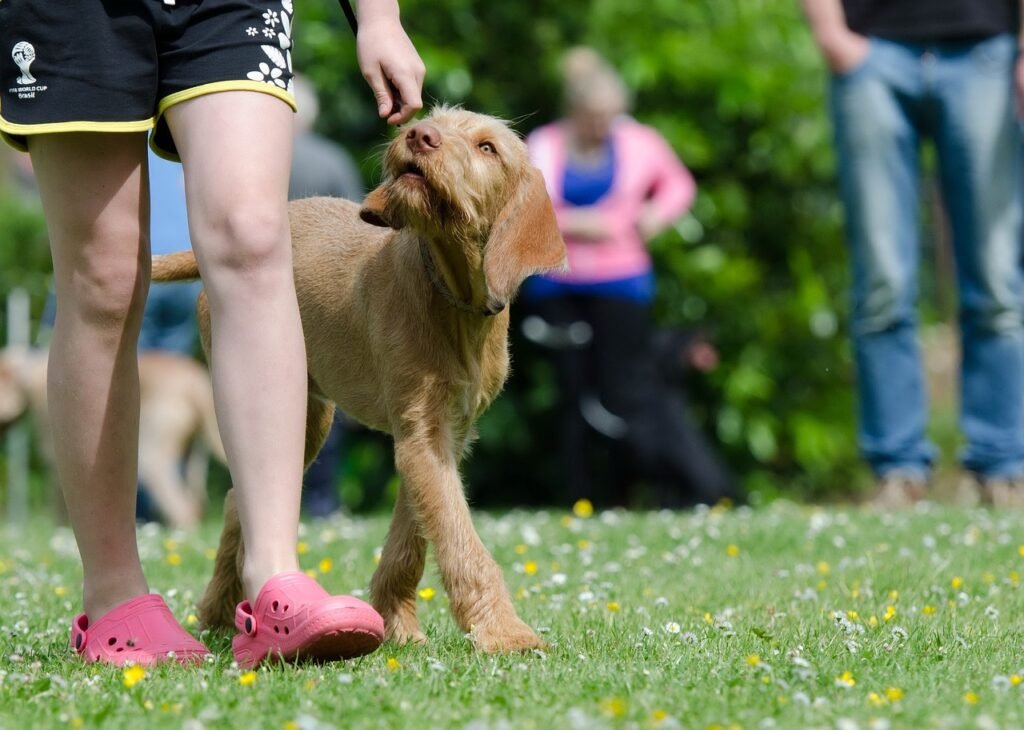
Mastering Crate Training for Dogs
If you’re a dog owner looking for an effective way to train your furry friend, mastering crate training might just be the key to success. Whether you’re dealing with a new puppy or an older dog, crate training can provide numerous benefits such as teaching them valuable house manners and providing a safe space for them to relax. In this article, we’ll share some essential crate training tips that will help you establish a positive and comfortable experience for both you and your beloved pet.
Benefits of Crate Training
Find products like these on Amazon!
Provides a Safe Space
Crate training provides dogs with a safe and secure space that is entirely their own. Dogs have an innate denning instinct, and providing them with a crate satisfies this need. Having a dedicated space where they can retreat to when they feel overwhelmed or need some alone time can greatly reduce their stress levels and anxiety. It becomes their sanctuary where they can feel calm and relaxed.
Aids in Potty Training
Crate training is an effective tool for potty training your dog. Dogs naturally avoid soiling their den, so when properly crate trained, they will learn to hold their bladder and bowel movements until they are taken outside. By using the crate as a controlled environment, you can establish a routine that reinforces good bathroom habits. This not only helps prevent accidents inside the house but also accelerates the potty training process.
Prevents Destructive Behavior
Dogs, especially puppies, can be prone to destructive behavior when left unsupervised. Chewing on furniture, shoes, and other household items can be costly and frustrating. Crate training can prevent these destructive tendencies by keeping your dog confined to a safe space whenever you are unable to supervise them. It provides a way to manage your dog’s behavior and protect your belongings from being damaged.
Choosing the Right Crate
Size
Choosing the appropriate crate size is crucial for the comfort and overall effectiveness of crate training. The crate should be large enough for your dog to stand, turn around, and lie down comfortably. However, it should not be too spacious as this may give them room to eliminate in a corner without soiling their sleeping area. Proper sizing ensures that your dog feels cozy and secure in their crate.
Material
Crate materials can vary, but it is important to choose one that is sturdy, durable, and easy to clean. Plastic crates are often lightweight and provide more privacy for your dog, while wire crates offer better ventilation and visibility. Consider your dog’s specific needs and preferences when selecting the material.
Design
The design of the crate should align with your training goals and your dog’s temperament. Some crates have dividers that allow you to adjust the space as your puppy grows, while others are collapsible for easy transport. It is also beneficial to choose a crate with a removable tray or mat for easy cleaning. Additionally, crates with two doors offer more flexibility for placement and accessibility.
Introducing Your Dog to the Crate

This image is property of pixabay.com.
Find products like these on Amazon!
Covering the Crate
Covering the crate, especially during the initial stages of crate training, can create a cozy and den-like environment for your dog. Using a blanket or a crate cover can help reduce distractions and make them feel more secure. Gradually, as your dog becomes more comfortable with the crate, you can start to leave it uncovered.
Using Treats and Toys
To make the crate an enticing and positive space, introduce treats and toys to associate positive experiences with being inside the crate. Place your dog’s favorite treats or a special chew toy inside the crate to encourage them to enter. You can also provide long-lasting treats or puzzle toys that will keep them mentally stimulated while inside the crate.
Positive Reinforcement
Positive reinforcement is key to crate training success. Whenever your dog willingly enters the crate or remains calm and relaxed inside, praise and reward them immediately. Use verbal praise, gentle petting, and treats to reinforce their good behavior. This positive association will make them more likely to willingly enter the crate in the future.
Creating a Positive Association
Feeding in the Crate
Feeding your dog their meals in the crate can help create a positive association with the space. Place their food bowl near the back of the crate, gradually moving it further inside as they become more comfortable. The act of eating inside the crate reinforces the idea that the crate is a safe and enjoyable place.
Rewarding with Treats
In addition to mealtime, randomly reward your dog with treats while they are in the crate. This reinforces the idea that being inside the crate leads to positive outcomes. It helps build a positive association with the crate and encourages your dog to voluntarily seek out the space.
Making it a Comfortable Space
Ensure your dog’s crate is comfortable by providing soft bedding or a crate pad. Avoid using materials that can be easily destroyed or ingested, such as towels or blankets with loose threads. Opt for crate-friendly bedding that is comfortable and safe, allowing your dog to relax and rest properly while inside the crate.
Establishing a Routine

This image is property of pixabay.com.
Set a Schedule
Establishing a consistent routine is essential for successful crate training. Set specific times for meals, potty breaks, exercise, and crate time. Dogs thrive on predictability, so a structured schedule will help them understand what is expected of them and when. This routine will also promote regularity in their bathroom habits, making potty training easier.
Gradual Increase in Crate Time
Start by gradually increasing the amount of time your dog spends in the crate. Begin with short intervals and gradually lengthen them as your dog becomes more comfortable. Avoid rushing the process as it might lead to anxiety and resistance. Gradual increments will allow your dog to adapt to the crate at their own pace.
Exercise before Crating
Providing your dog with adequate exercise before crating can help reduce restlessness and anxiety while inside the crate. Engaging in physical activity beforehand allows them to release any pent-up energy, making it more likely for them to settle down and relax. A tired dog is generally a calmer and more content dog, which translates to a smoother crate training experience.
Dealing with Whining and Anxiety
Ignoring the Whining
It is important to resist the urge to immediately respond to whining or barking while your dog is in the crate. If you give in to their demands and let them out whenever they make noise, you unintentionally reinforce the behavior. Instead, wait for a moment of silence and then reward them for being quiet. Over time, they will understand that whining does not get them what they want.
Using a Calming Aid
If your dog experiences anxiety or stress while in the crate, consider using a calming aid. Calming aids can be in the form of natural supplements, pheromone sprays, or anxiety wraps. These can help alleviate their anxious feelings and create a sense of calmness. Consult with your veterinarian for advice on the most suitable calming aid for your dog.
Crate Games to Reduce Anxiety
Engaging your dog in crate games can make the crate a positive and enjoyable experience. Play games near and around the crate, gradually incorporating the crate into the game. Toss treats inside the crate for your dog to find or hide toys inside for them to discover. These games help reduce anxiety by distracting your dog and associating the crate with fun and rewards.
Avoiding Common Mistakes

This image is property of pixabay.com.
Using the Crate as Punishment
Never use the crate as a form of punishment for your dog. The crate should always be associated with positive experiences and feelings of security. If your dog associates the crate with punishment, they may become fearful or resistant to enter it. Crate training should be a positive process that builds trust and strengthens the bond between you and your dog.
Leaving the Dog Crated for Too Long
While crate training is beneficial, it is important not to leave your dog crated for excessive periods of time. Dogs need regular exercise, mental stimulation, and social interaction. Prolonged confinement can lead to boredom, restlessness, and even physical discomfort. Ensure your dog has plenty of opportunities for exercise, playtime, and interaction outside of their crate.
Not Using the Crate during Travel
Crate training is not just beneficial at home but also during travel. Using a crate in your car or during flights can provide a familiar and secure space for your dog in unfamiliar surroundings. It also helps ensure their safety and prevents them from becoming a distraction while driving. Invest in a travel crate that is safe, comfortable, and meets the requirements for transportation.
Troubleshooting Crate Training Challenges
Fear or Aggression towards the Crate
If your dog displays fear or aggression towards the crate, it is important to address the underlying issue. Gradually desensitize them to the crate by introducing it in a non-threatening manner. Associate positive experiences with the crate by using treats, toys, and praise. Consult with a professional dog trainer or behaviorist if the fear or aggression persists.
Escaping or Chewing on the Crate
Some dogs may attempt to escape or chew on the crate, especially during the initial stages of crate training. Ensure that the crate is securely locked and that there are no sharp edges or pieces that can be chewed and ingested. Provide appropriate chew toys to redirect their chewing behavior and discourage them from damaging the crate. As they become more comfortable and outgrow their teething phase, the chewing incidents should decrease.
Resistance to Enter the Crate
If your dog is resistant to enter the crate, do not force them. Instead, use positive reinforcement techniques to gradually build their confidence and trust. Start by tossing treats near the crate and gradually move them closer, rewarding your dog for any movement towards the crate. Over time, they will feel more comfortable entering voluntarily.
Gradually Increasing Crate Time
Start with Short Sessions
When initially crate training, start with short sessions inside the crate. Begin by closing the door for a few minutes while your dog is occupied with a treat or toy. Slowly build up the time they spend inside, making sure they remain calm and relaxed throughout. This gradual approach helps prevent overwhelming your dog and allows them to adapt at their own pace.
Using a Command or Cue
Introducing a specific command or cue can help signal to your dog that it is time to enter the crate. Consistently using the same word or phrase, such as “crate” or “kennel up,” will associate the cue with the action of going into the crate. With repetition and positive reinforcement, your dog will learn to understand and respond to the command.
Gradually Extend Crate Time
As your dog becomes more comfortable and relaxed in the crate, gradually extend the amount of time they spend inside. Monitor their behavior and gradually increase the duration of each session. Remember to praise and reward them for their calm and relaxed behavior. Building up their tolerance to longer crate time gradually will make the transition smoother and more comfortable for them.
Transitioning to Unsupervised Freedom
Supervised Free Time in a Safe Space
Once your dog is comfortable and reliable in the crate, you can gradually introduce supervised free time in a designated dog-proofed area of your home. This area should be safe and free from potential hazards or items that your dog might chew on. Supervise their behavior closely during this time to ensure they do not engage in any destructive or unwanted behaviors.
Gradual Increase in Freedom
Increase your dog’s unsupervised freedom slowly, allowing them access to one or two additional rooms at a time. Monitor their behavior to ensure they can handle the increased space responsibly. If any issues arise, temporarily restrict their access and continue to gradually increase their freedom as they demonstrate good behavior.
Monitoring for Signs of Relapse
Even after transitioning to unsupervised freedom, it is important to monitor your dog for any signs of relapse. Watch for any potential regressions in behavior or accidents. If necessary, temporarily reintroduce the use of the crate and reassess your dog’s readiness for increased freedom. Remember, each dog is unique, and the timeline for transitioning to unsupervised freedom may vary.
In conclusion, crate training can provide numerous benefits for both you and your dog. It offers a safe space, aids in potty training, and prevents destructive behavior. By choosing the right crate, introducing your dog gradually, creating a positive association, establishing a routine, and addressing challenges, you can successfully crate train your dog. Remember to be patient, consistent, and always use positive reinforcement techniques. With time and practice, your dog will come to view their crate as a secure and comforting space, and crate training will become a valuable tool in your dog’s life.
Find products like these on Amazon!
- Benefits of Crate Training
- Choosing the Right Crate
- Introducing Your Dog to the Crate
- Creating a Positive Association
- Establishing a Routine
- Dealing with Whining and Anxiety
- Avoiding Common Mistakes
- Troubleshooting Crate Training Challenges
- Gradually Increasing Crate Time
- Transitioning to Unsupervised Freedom



-
-
2 hours
Tagged Crate training, Dog behavior, Separation anxiety